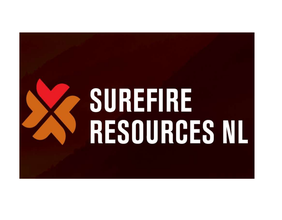Facebook, the social networking giant and cause of ire of many regulators and users, recently revealed plans for a new global digital currency, or cryptocurrency, called Libra, which is built on a secure, scalable, and reliable blockchain. The currency is backed by more than two dozen multinational groups ranging from payments gateways to technology and marketplaces, though financial companies are missing, and is backed by sovereign debt of a bunch of stable countries. This is the most significant effort by the largest social network in the world to transform financial services, and the scope of its ambitions for its new currency was made evident as it claimed 1.7 billion people around the world without a bank account would be able to use.
The company claimed the currency would enable users nearly free money transfers across the borders from their mobile phones and create a more efficient payment system that users would be able to use immediately and directly from their apps. This includes acting as a replacement for cash in underbanked areas, paying merchants for services, and transferring money to friends or family. Facebook intends for the new cryptocurrency to be a replacement and alternative for paper money and even credit cards, in many cases, and one of the stated aims is for Libra to function as the currency of choice for migrant workers, unbanked populations in the developing world and more. Even without banks, Libra can help people keep their funds safe and accessible by creating a simple system that offers similar fungibility to cash.
To manage the currency, an independent, not-for-profit membership organisation, named the Libra Association, has been formed, which will preserve the stable value of Libra and will have the final decision-making authority. Each founding partner in the Libra Association contributed a minimum of $10 million to help kick-start the project, and so far, 28 groups including venture capital companies have agreed to become backers and integrate the technology into their services. Facebook, which played a crucial role in the creation of the Libra Association and the Libra Blockchain, hopes that at least 100 companies would join the organisation and help in developing the technical roadmap of the Libra network.
To prevent the use of Libra as an instrument for speculation and investment, like Bitcoin and Ether, which have no underlying assets to back them, Libra will be supported by a set of stable and liquid assets to preserve its value. The underlying assets are known as Libra reserve, and it would help in protecting against the speculative swings, unlike other cryptocurrencies, and support stability and value preservation. The value of Libra will be effectively linked to a basket of fiat currencies, and the reserve will be invested in low-risk assets that will yield interest over time, including bank deposits and government securities in currencies from stable and reputable central banks.
The likelihood and severity of fluctuations caused by currency will be mitigated through the makeup of reserve, which is structured with capital preservation and liquidity in mind. To reduce the potential impact of any downturn, the reserve would be diversified by selecting multiple governments, and the association will only invest in debt from stable governments that are unlikely to experience high inflation and would have low default probability. To enable the easy adjustment of the size of the Libra reserve in consonance with expansion or contraction of circulation, the association plans to rely on short-dated securities issued by these governments. The securities would accommodate daily trading volume in billions and would be highly liquid. Due to these features, it has been regarded as a stable coin.
While Libra uses cryptocurrency technology, with a public ledger, it is more restricted than other cryptocurrencies, and thus is not really a blockchain in the traditional sense. Blockchain can be widely categorised into permissioned and Permission less. In a permission less chain, anybody can mine new coins, like Bitcoin and Ethereum, and are highly decentralised but they are much slower. Permissioned blockchains, on the other hand, are not as decentralised but are faster. While the goal of Libra is to become permission less chain eventually, it will start as a permissioned blockchain. For the new currency to be a success, the underlying system must be highly secure, to ensure the safety of funds and financial data, and should have the ability to scale to billions of accounts to handle a huge number of transactions.
The company in its White Paper explained that the cryptocurrency is intended to extend a digital payment method to under-served populations and does not see the cryptocurrency as an attempt to replace the current financial system. The paper stressed that even though one billion have a mobile phone and nearly half a billion have internet access, 1.7 billion adults remain outside of the financial system with no access to a traditional bank, and it is this gap the currency intends to fill. To facilitate transfers, Facebook is launching a digital wallet called Calibra, which will not be available until the first half of 2020 and will be integrated into its family of apps.
While the latest move by Facebook is its most significant effort till date to bring blockchain technology into the mainstream, it is unclear whether Libra will clear the impediments to get off the ground, including winning over regulators. In the past, the impact of privately-created cryptocurrencies on financial stability has been questioned by central banks around the world, and it is not clear whether the new currency will be accepted, or strongly opposed, by the financial services industry. While Facebook said financial data gathered by Calibra would not be shared with Facebook or third parties without customer consent and not be used to target advertising, the company and its head do not have a stellar, or even decent, record of concerns for the privacy of users. Moreover, government-issued ID would be required for accounts and know-your-customer information would be collected, which could further exacerbate privacy concerns. In the past, allegations have been levelled that the company employed anti-competitive practices in the pursuit of growth and that it has failed, or avoided, to responsibly prevent privacy abuse on its platform, leading to public anger and heightened regulatory scrutiny due to concerns over data privacy.
Outrage against the financial industry because of high transaction fees by banks, currency exchange companies and remittance intermediaries are common, but there is a good reason to doubt the intentions of the company which has a sketchy record of integrity. Even if users were to trust the digital currency, the companyâs goal of financial inclusion is not as easy as the company claims. According to the World Bank, of the total 1.7 billion financially excluded people, three-quarters do not have internet access, limiting their ability to go digital. The digital penetration at financially-excluded regions in many emerging countries is still low by modern standards and broadband availability in many emerging economies is still missing. Moreover, the bulk of unbanked can be found in rural areas, which is far less likely to be digitally connected. Additionally, with regulatory concerns and know your customer issues, poor people are less likely to be able to prove their identity.
The proposed digital currency will face many regulatory hurdles, ranging from tax problems and money laundering to the stability of the financial system and effective transmission of monetary policy. Its mainstream adoption will be hampered by tax laws around the world. Rather than fix it in value against the domestic currency, it will be pegged to a basket of currencies globally. However, this will create capital gains and losses as Libra holdings will change as global exchange rates change. Moreover, the governing body will have to reassure concerned authorities that it can prevent fraud and undergo stringent anti-money laundering checks, which may include applying for money transmitter licenses from every regulator in the country it operates in. Apart from regulatory challenges, explaining the complexity of the currency to consumers and merchants would not be easy, especially to the part of the population it claims to serve the most, which might further hinder its usage.
While critics of the initiative have several other concerns, many of which seem genuine, it needs to be analysed how Libra would impact the global monetary policymaking. Many users may choose to keep Libra instead of exchanging it back for their own currencies if Libra becomes popular and becomes a preferred medium of transaction, though this looks highly unlikely at the moment. The ability of policymaker to control inflation would be impacted, and one of the monetary instruments of central banks risks becoming ineffective. The efficacy of increasing policy rates to help reduce some of the money in circulation in time of inflation could be vastly diminished if a private organisation the calls shots.
Given the unanswered questions around accountability and control, the new currency is unlikely to become the default currency of the world any time soon. While some regulators have threatened close scrutiny of the currency, others have cautiously welcomed the project, and stressing the financial inclusion message seems like a ploy to win over policymakers. An asset would become a preferred mode for transaction only if satisfies all the three conditions, namely unit of account, store of value, standard of deferred payment, and medium of exchange. Libraâs best bet is to become a medium of exchange for a large part of the world, but even that looks viable for small and ordinary transactions.






